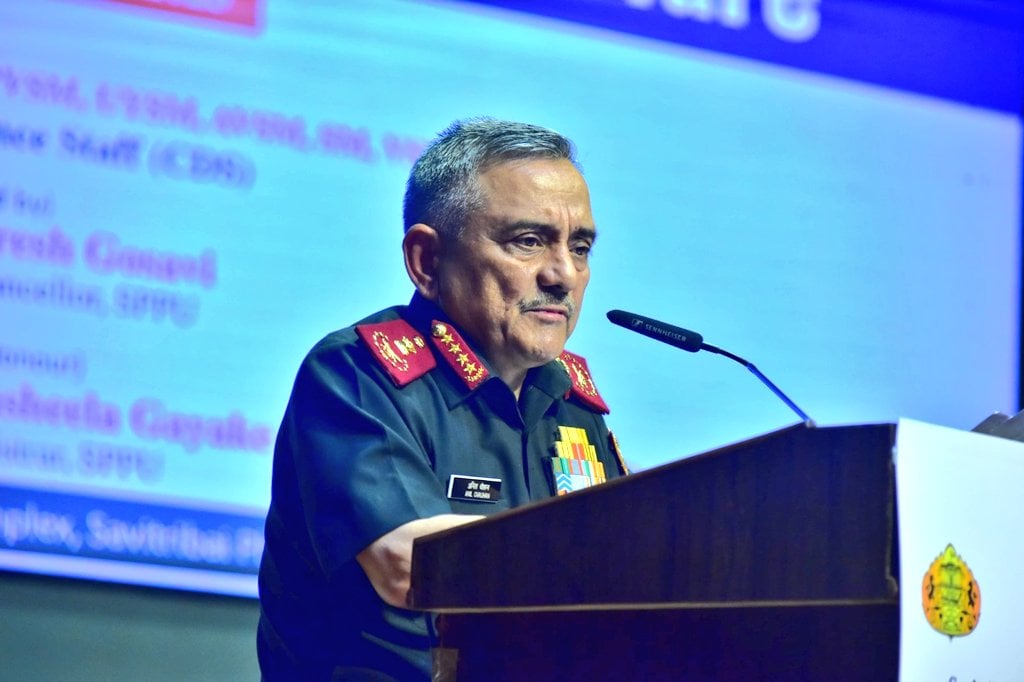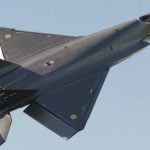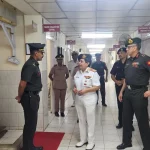General Anil Chauhan, India’s Chief of Defence Staff, delivered a comprehensive lecture on “Future Wars and Warfare” at Savitribai Phule Pune University, offering deep insights into the evolving landscape of military conflict and India’s strategic direction to face it.
Speaking before an audience of armed forces personnel, scholars, and students, General Chauhan outlined the critical role of emerging technologies such as artificial intelligence, machine learning, and quantum computing in redefining how wars will be fought. He noted that these tools are transforming the battlefield into an intelligent, data-driven space where speed and precision are decisive factors. “AI, ML, and quantum tech are enabling the intelligentisation of the battlefield,” he stated, highlighting their potential to accelerate decision-making and enhance operational readiness.
A major theme of the address was India’s recent Operation Sindoor, a precision military response targeting terrorist camps. General Chauhan described it as a model of integrated multi-domain warfare, involving coordination across land, air, maritime, cyber, space, electromagnetic, and cognitive domains. He cited the operation as an example of India’s ability to combine kinetic and non-kinetic tools to deliver a strategic message. Addressing scrutiny over the temporary loss of combat aircraft in the operation’s early phase, he asserted that mission outcomes ultimately matter more than short-term setbacks.
General Chauhan explained that future conflicts will be “demassified but capability-integrated,” meaning traditional large military platforms may become liabilities. Instead, he argued that modern defense must focus on layered air defense, networked communications, and rapid data sharing across military branches. He linked this to India’s work on new anti-ballistic missile systems—AD-1 and AD-2—capable of intercepting medium and long-range threats, underscoring the country’s drive to build a robust defense architecture.
He called for a doctrinal shift from attritional warfare to cognitive dominance, stressing that mental agility, tactical innovation, and integrated force development are vital in today’s rapidly changing threat environment. The CDS advocated for “tactics-led modernization” rooted in indigenous capabilities, ensuring India’s strategic autonomy. He pointed to quantum technology’s potential in logistics, simulations, and battlefield decision-making as an example of future-ready innovation already underway.
Touching on regional security, General Chauhan directly addressed Pakistan’s longstanding use of proxy warfare, referencing its “bleeding India by a thousand cuts” doctrine. He positioned Operation Sindoor as a definitive line drawn by India, asserting that the country will no longer tolerate cross-border terrorism under the guise of nuclear deterrence.
The lecture concluded with a token of appreciation presented to General Chauhan by university officials, including Vice-Chancellor Prof. (Dr.) Suresh Gosavi and Pro-Vice-Chancellor Dr. Apoorva Palkar. Attendees left with a clear understanding of India’s defense outlook: a future anchored in integration, innovation, and strategic resilience.













